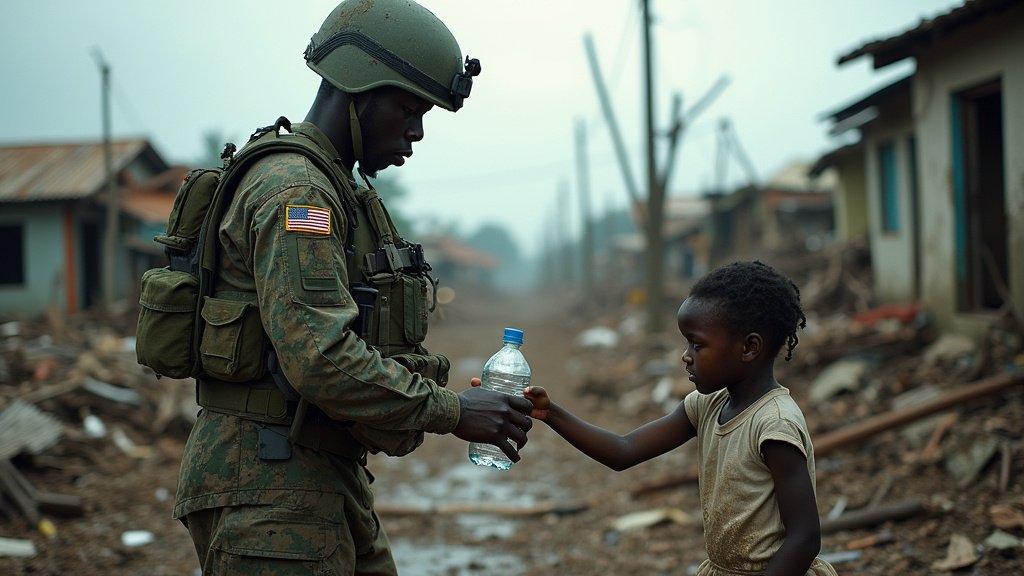Four days after Hurricane Melissa Jamaica, a Category 5 behemoth, tore across the island, rescuers and aid workers are battling immense devastation to reach isolated communities, distributing essential supplies, and beginning the long road to recovery. The storm, the strongest ever recorded to make landfall in Jamaica, has left a trail of destruction, claiming lives, flattening homes, and crippling critical infrastructure across the island nation. Understanding the impact of Hurricane Melissa Jamaica is crucial for planning future mitigation efforts and assessing Jamaica infrastructure damage.
The Fury of Melissa Unleashed on Jamaica
Making landfall on October 28, 2025, with sustained winds reaching up to 185 mph, Hurricane Melissa unleashed catastrophic winds, torrential rains, and a devastating storm surge. Prime Minister Andrew Holness declared Black River in St. Elizabeth Parish the “ground zero” of the disaster, describing the town as having been “almost completely wiped out”. Satellite imagery starkly illustrates the obliteration, showing once vibrant fishing villages like White House and towns like Black River reduced to rubble. The storm’s slow passage over the island exacerbated its destructive power, causing widespread flooding and landslides that rendered many areas inaccessible, showcasing the full extent of the Hurricane Melissa Jamaica disaster and the resulting Island storm devastation.
A Nation in Crisis: Impact and Isolation After Hurricane Melissa Jamaica
Authorities have confirmed at least 19 deaths in Jamaica, though officials acknowledge that the true toll may be higher given the ongoing challenges in reaching remote areas following Hurricane Melissa Jamaica. The hurricane’s impact has been catastrophic for infrastructure: over 60% of the island remained without power days after landfall, and nearly 400 water systems were knocked out. Communications networks have been severely disrupted, further isolating affected communities and complicating damage assessments. The Hurricane Melissa aftermath has left many parts of Jamaica struggling to cope with the severe Jamaica storm devastation.
In the hardest-hit western parishes, including St. Elizabeth, Westmoreland, Hanover, and St. James, entire neighborhoods have been submerged, roads blocked by debris, and homes destroyed. Approximately 90% of houses in some areas suffered structural damage, with many losing their roofs entirely. Critical facilities, including several hospitals, sustained significant damage, with some forced to evacuate patients due to compromised structures and loss of power. The agricultural sector, vital to Jamaica’s economy, has also been devastated, with crops flattened and fishing communities losing their vessels and homes, contributing to the overall Island storm devastation.
National Response and Financial Preparedness for Hurricane Melissa Jamaica
In the face of such widespread devastation, the Jamaican government has mobilized a comprehensive response to Hurricane Melissa Jamaica. Prime Minister Holness has outlined a multi-layered strategy, leveraging disaster risk financing, a national disaster fund, credit lines, and insurance policies to expedite recovery. The Jamaica Defence Force (JDF) has been actively involved, deploying personnel for search and rescue operations, establishing relief sites to distribute care packages, and working to clear vital roadways. The Jamaica Constabulary Force (JCF) is also providing critical support at airports and seaports to facilitate the safe and orderly resumption of operations and the delivery of aid, a key part of the Jamaica disaster relief efforts.
Global Aid and Community Resilience Shine Through After Hurricane Melissa Jamaica
As Jamaica grapples with the immense scale of destruction from Hurricane Melissa Jamaica, international aid efforts have rapidly mobilized. The United Nations, through agencies like the World Food Programme (WFP), Pan American Health Organization (PAHO), and UNICEF, is providing critical food assistance, health kits, and WASH (Water, Sanitation, and Hygiene) support. The International Federation of Red Cross and Red Crescent Societies (IFRC) has launched a significant emergency appeal and is dispatching tons of humanitarian aid, including shelter kits, solar lamps, and tarpaulins, highlighting the need for International aid Jamaica.
Numerous non-governmental organizations and international partners, including the U.S. military with its Joint Task Force-Bravo and Disaster Assistance Response Teams, Amazon, Disney, Samaritan’s Purse, World Central Kitchen, Project HOPE, Mercy Corps, and IsraAID, are contributing vital resources and expertise. The Jamaican diaspora, particularly in the United States, has also rallied, establishing numerous drop-off sites for relief supplies and mobilizing financial support as part of the Jamaica disaster relief. The commitment to a strong Hurricane recovery plan is evident in these widespread efforts.
Despite the catastrophic damage, stories of community resilience are emerging. Neighbors are reportedly helping each other clear debris, sharing scarce resources, and organizing mutual support, embodying the Jamaican spirit of “Out of Many, One People” and demonstrating remarkable Community resilience efforts in the face of the Hurricane Melissa Jamaica crisis.
Challenges Ahead and the Road to Recovery After Hurricane Melissa Jamaica
Aid efforts face significant logistical challenges, including impassable roads, ongoing power and communication outages, and the sheer scale of need following Hurricane Melissa Jamaica. The economic impact of Hurricane Melissa is projected to be severe, with estimates suggesting damages could range from 30% to 250% of Jamaica’s GDP. A significant “protection gap” exists due to low insurance penetration, meaning the vast majority of the financial burden will fall on uninsured households and the government, underscoring the island’s vulnerability to extreme weather events like the Category 5 hurricane.
The path to recovery from Hurricane Melissa Jamaica will be long and arduous, requiring sustained support to rebuild infrastructure, restore livelihoods, and address the psychosocial needs of affected communities. However, the island’s proactive financial preparedness and the unwavering spirit of its people offer a beacon of hope as Jamaica begins the monumental task of rebuilding “stronger and wiser” in the aftermath of the Hurricane Melissa Jamaica event, with a focus on addressing Jamaica infrastructure damage.

